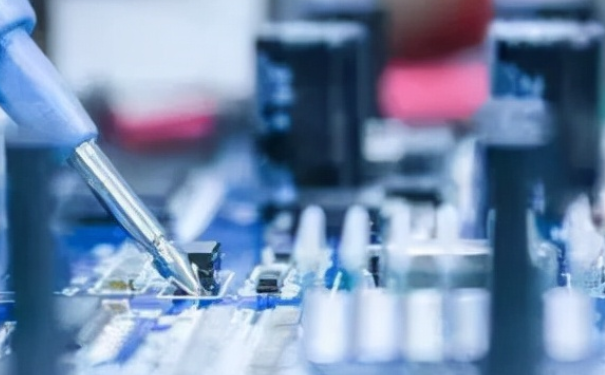What is the proper welding temperature for electronic components?
Date:2022-08-05 15:40:18 Views:5219
Welding is a method of joining metals. It uses heating means to form a permanent and firm bond between the two metals through the mutual diffusion of atoms or molecules of welding materials on the contact surface of the two metals. Different welding objects require different working temperatures of electric soldering irons. When judging the temperature of the soldering iron head, the electric soldering iron can touch the rosin. If there is a "squeaking" sound when the soldering iron touches the rosin, the temperature is appropriate; If there is no sound, it can only melt the rosin, indicating that the temperature is low; If the soldering iron head smokes a lot when it touches rosin, it indicates that the temperature is too high.
Generally speaking, there are three steps for welding:
1. First melt a small amount of solder and rosin on the soldering iron head, and align the soldering iron head and solder wire at the same time.
2. When the flux on the soldering iron head has not been volatilized, the soldering iron head and the solder wire shall contact the solder joint at the same time to start melting the solder.
3. When the solder soaks the whole solder joint, remove the iron head and solder wire at the same time or remove the tin wire first. After the solder joint is full and beautiful, leave the iron head and solder wire.
The welding process is generally 2-3s. When welding integrated circuits, the amount of solder and flux should be strictly controlled. In order to avoid damage to the integrated circuit due to poor insulation of the electric iron or the induced voltage of the internal heater to the shell, the method of unplugging the power plug of the electric iron and welding while it is hot is often used in practical applications.

Precautions about temperature during welding of electronic components:
(1) The welding temperature is required to be carried out at a relatively low temperature to ensure that the components will not be damaged by thermal shock. If the melting point of the solder is between 180-220 ℃, the welding temperature is usually about 50 ℃ higher than the actual melting temperature of the solder, and the actual welding temperature is in the range of 220-250 ℃. According to ipc-sm-782, generally, chip components are only kept for 10s at 260 ℃, while some thermal SMT components have lower heat-resistant temperature. In addition, PCB will also form thermal stress after high temperature, so the melting point of solder should not be too high.
(2) Molten solder must have good fluidity on the surface of the metal to be welded, which is conducive to the uniform distribution of solder and lays the foundation for wetting.
(3) The solidification time should be short, which is conducive to the formation of solder joints and easy to operate.
(4) After welding, the appearance of the welding spot shall be good and convenient for inspection.
(5) It has good conductivity and sufficient mechanical strength.
(6) Good corrosion resistance. Electronic products should be able to work under certain high temperature or low temperature, smoke and other harsh environments, especially military, aerospace, communications and large computers. Therefore, the solder must have good corrosion resistance.
(7) The sources of solder raw materials should be extensive, that is, the metal minerals that make up solder should be abundant and the price should be low, so as to ensure stable supply.
The above is the content related to the welding temperature of electronic components compiled by the core detection team. I hope it will be helpful to you. Shenzhen Chuangxin Online Testing Technology Co., Ltd. is a well-known professional testing institution for electronic components in China, with 3 standardized laboratories covering an area of more than 1000 square meters. The scope of testing services covers: testing and verification of electronic components, identification of IC authenticity, product design and material selection, failure analysis, function testing, factory incoming inspection, X-ray testing of components and braiding and other test items.




 Weixin Service
Weixin Service

 DouYin
DouYin
 KuaiShou
KuaiShou





















